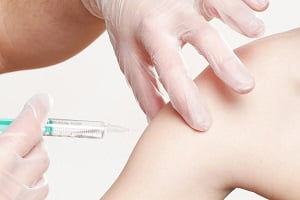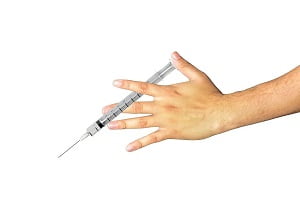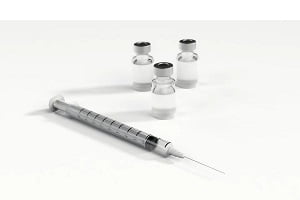Maternal and Neonatal Tetanus Prevention
- Updated on: Jun 29, 2024
- 4 min Read
- Published on Nov 9, 2020

Poverty and healthcare inefficiency play a significant role in maternal and neonatal tetanus (MNT) occurrence. It is most prevalent in developing countries. Even the countries which can eradicate the maternal and neonatal tetanus are among the top fifty emerging countries. Maternal and neonatal tetanus is a destructive disease caused by toxins released by the bacterium Clostridium tetani. This bacterium lives on dead and decaying matter. Babies born in unhygienic places are more susceptible to tetanus. Spores of tetanus may enter into the body of the female from the umbilical cord stump. This causes stiffness and spasm leading to maternal and neonatal tetanus (MNT). MNT is usually fatal in more than 70% of the cases, and newborn babies die within a week or two.
Women may also get infected with tetanus disease if the delivery is performed under unhygienic conditions. However, this disease can easily be prevented by immunizing women during pregnancy and maintaining good hygiene during delivery.
WHO started an initiative of elimination of maternal and neonatal tetanus at a global level. This initiative was formed in 1989, and since then, there has been a significant fall in the number of MNT patients. This considerable reduction in the deaths and the number of cases also resulted from improved deliveries and proper immunization of pregnant women.
Elimination of Maternal and Neonatal Tetanus
Confirmed neonatal tetanus cases have an average ability to cry and suck for the first two days. Then, from day 3 to 28, they lose this ability due to stiffness and spasm in the mouth area. This causes difficulty in mouth opening. Neonatal tetanus depends on immunization of pregnant women. Elimination of maternal tetanus can be confirmed if there are no signs of tetanus during pregnancy and even six weeks after pregnancy.
Read About How Long Does Tetanus Vaccination Prevent the Infection
Strategies for the Prevention and Elimination of Maternal and Neonatal Tetanus
Following are the two strategies that can be used for the prevention and elimination of maternal and neonatal tetanus:
Immunization
Tetanus vaccine toxoid is available in three forms – monovalent, bivalent, and trivalent. The monovalent formulation helps in building immunity against tetanus. Bivalent formulation develops immunity against tetanus along with diphtheria. Bivalent toxoid is combined with diphtheria or reduced diphtheria toxoid content. The trivalent formulation has toxoids combined with diphtheria and acellular or whole-cell pertussis. There are other vaccine combinations also available, like toxoid in combination with hepatitis B and polio.
According to WHO, the trivalent formulation, also known as DTP, should be given to newborns at 2, 3, and 4 months and the boosters should be delivered at 5, 7, and 15 years of age. If the pregnant woman has never been vaccinated with tetanus toxoid, she should be given two vaccine shots four weeks apart, whereas the 2nd shot should be given two weeks before the delivery. These two doses protect for 1-3 years, and the 3rd short is also suggested, which is given after six months of 2nd shot. This protects against the infection for at least the next five years. If a woman has a total of five doses of tetanus toxoid vaccine during the first pregnancy, then there is no need to have further shots in the subsequent pregnancies. Maternal vaccination protects 87% of the neonates from infection. This strategy has two approaches:
Routine Immunization: In this procedure, women are vaccinated two times with a gap of four weeks during pregnancy.
Supplementary Immunization Activity: This is performed in the areas which are under the high risk of neonatal tetanus. It is functional in those areas where the first approach is not beneficial. This approach helps to vaccinate children beyond conventional strategies by providing school-based settings, medical camps, markets, and community-based settings.
Read About Tetanus Adverse Reactions Following Tetanus Vaccination in Some People
Clean Birth Kits
This is the second strategy that helps in the elimination and prevention of maternal & neonatal tetanus. This strategy focuses on providing a clean and hygienic environment for the delivery of infants. There are high rates of neonatal deaths due to umbilical cord infections. This procedure promotes the six cleanliness facilities during delivery, which include:
1. Clean hands
2. Clean perineum
3. Clean delivery surface
4. Clean cord-cutting
5. Clean cord tying
6. Clean cord care
Initially, six cleanliness facilities were scarce due to supply issues, and sometimes women could not pay for that. But now, it has been made universally accessible to promote clean and hygienic childbirth. WHO endorses the clean birth kit for delivery and its disposable. The sterilized disposable birth kit contains a plastic delivery sheet, perineum, soap for clean hands, a blade to cut the umbilical cord, a clean ligand to tie the umbilical cord, gloves, gauge, and spirit for post-cleaning.
FAQs
Can Tdap Vaccine be Given to a Pregnant Woman?
Yes, if the pregnant woman has never been vaccinated with tetanus toxoid, she should be given two vaccine shots four weeks apart, whereas the 2nd shot is given two weeks before the delivery.
How Effective are These Vaccines?
Maternal vaccination protects 87% of the neonates from infection. Tdap provides 99%protection from diphtheria and 100% protection from all types of tetanus.
How Prevalent is Tetanus in the United States?
On an average, 30 cases are reported every year.
What is Neonatal Tetanus?
It is a type of tetanus that can be given to infants during their birth if their umbilical cord is cut with an unsterilized blade.












